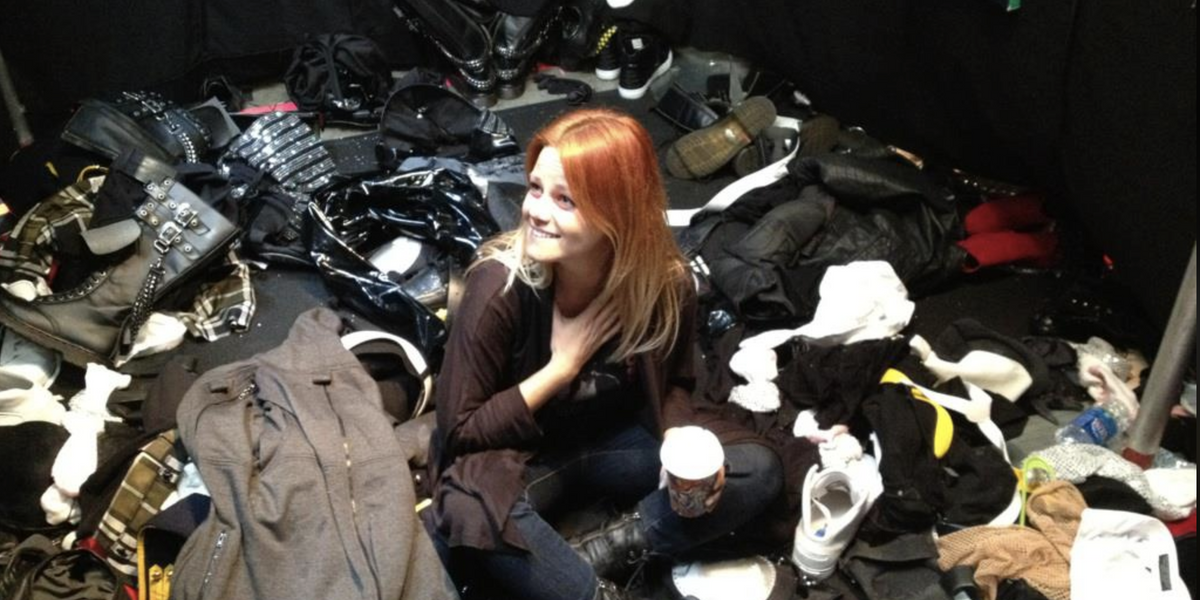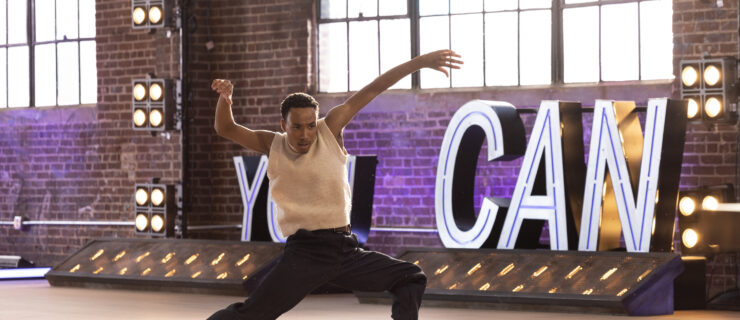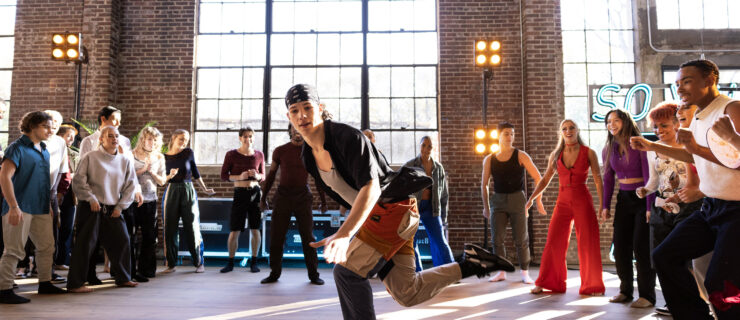How the “SYTYCD” Costume Designer Creates Wearable Art for Dancers
Ever wondered what goes into the production of the hundreds of costumes used in the live episodes of “So You Think You Can Dance”? Always innovative—and often straight-up jaw-dropping—they’re an important part of the show’s memorable dance storytelling.
The genius behind “SYTYCD”‘s costume magic is designer Marina Toybina, who’s been working with dancers for a decade and has earned four Emmys for her dance costuming. In addition to her “SYT” designs, you’ve probably seen and admired her costumes for the first three seasons of “World of Dance,” Taylor Swift’s Red World Tour, and the 2015 Super Bowl Halftime Show. (She’s also responsible for the brilliantly surreal ensembles on “The Masked Singer.”)
As we wait to hear whether “SYT” will be able to return this summer, we talked to Toybina about how she collaborates with choreographers and dancers, what goes into the creation of danceable fashion, and how great costuming can elevate a dance.
How did you first start making dance costumes?
Around 2009, I started to mainly work with music stylists, slowly shifting my focus from couture fashion to costume and stage. From there, I had an incredible opportunity to team up with a well-known dance crew, The Beat Freaks, and collaborate with them on multiple projects and performances. Later on, I was introduced to the iconic choreographer Brian Friedman. We instantly hit it off. With Brian, I started to explore the world of dance in multiple outlets: music videos, award shows, tours, and television. Brian is also the main reason that I got the call to design my very first TV show, “The X Factor,” in 2010. That’s when my avenues truly opened up, and I was able to design for dancers on bigger platforms. Looking back at the past 10 years, it’s fair to say that I owe the majority of my success to this wonderful man, a man I’m honored to call my dear friend, mentor, muse, and inspiration.

Toybina with Brian Friedman (courtesy Toybina)
What are the challenges of costume-making for dance?
In the very beginning, I definitely made some mistakes—poor fabric choices, wrong shoes—due to my lack of knowledge and experience. Then, over time, the language of dance truly became second nature. I educated myself in proper pattern-making, draping, use of materials, and sewing techniques. The challenges became less worrisome for me when I started to communicate more effectively with the dancers. I started to pay closer attention to their needs—how they executed their choreography, what their bodies required to move freely, what fabrics and footwear and accessories were necessary.

Top left: Ariana Crowder, Gaby Diaz, and Burim Jusufi in a Season 12 routine (Adam Rose/FOX); other three images: the creation of the number’s costumes (courtesy Toybina)
How did you get involved with “SYTYCD”?
I was working on “The X Factor”—it was my third season—when [executive producer] Jeff Thacker approached me about coming on board “SYT” for Season 10. I was very excited about the opportunity. I knew it would allow me the chance to explore and expand my creativity, and to offer something new and different to the show.
What is the creative process like on “SYT”?
Usually we have four to five days between live shows to turn over about 60 costumes. We start each show with a creative meeting, led by Jeff, to go over the concepts and ideas pitched by the choreographers. I then contact the choreographers individually and have them discuss their mood boards, music choices, costume inspirations, and overall tone for their pieces.
From there, the shopping, sewing, crafting and designing begins. I do work very closely with make-up and hair departments, and our collaboration is key when it comes to live shows. Fittings follow within three days of prep from all the departments, and then it’s showtime! Most of the time, we get everything done and perfected before the shows go live. But of course I’ve had moments where I had to sew in my dancers right before they go onstage. It’s a rush, lots of hard work, but in the end, it’s well worth it!
What are your go-to tricks and techniques to help costumes move better?
Using proper fabrics (four-way stretch anything) is my main trick, as well as frequent use of hidden elastics and secure closures. I make sure my seam work, patterns, and construction are designed for mobility and durability, so the costume acts and feels like a second skin to the dancer. The fact that we finish all of our costumes by hand allows me to control the fine details.

The “SYTYCD” Season 10 Top 20 in the Toybina’s Emmy-winning costumes (Adam Rose/FOX)
Which dance costumes are you especially proud of?
For “SYTYCD,” I was actually recognized in my first season, when I won alongside my wardrobe department for Tyce Diorio’s exquisite piece. My strength has always been period costuming, and Tyce had created this incredible routine with a Victorian element to it. I was able to use vintage pieces and then incorporate these brand-new sewing and fabrication techniques that were truly breathtaking. The amount of work that went into that performance was insane! And it looked stunning. Wearable art is what I would call it.
“World of Dance” was a slightly different experience for me, because it wasn’t just executing a vision, it was also dealing with different age groups, multiple languages, and different cultures from all over the world. On Season 2, we had a group from Japan, the Fabulous Sisters—13 female dancers ranging in age from 8 to 15. I was really impressed with the way we were able to communicate purely through the language of dance, and create these gorgeous, elaborate costumes for them, which left viewers visually in awe.

The Fabulous Sisters on “World of Dance” (courtesy Toybina)
What do you enjoy about working with dancers?
Helping them tell their story—helping them communicate powerful emotions—that’s what brings me joy. I’m personally very moved by dance and its power. When I design for dancers, and then get to stand back and see it all come together, I notice that the costume often acts as an introduction of feeling. It gets you to understand an emotion before the music even starts. I love that my team and I get to create that visual, to set the tone for the work you’re about to fall in love with.”




